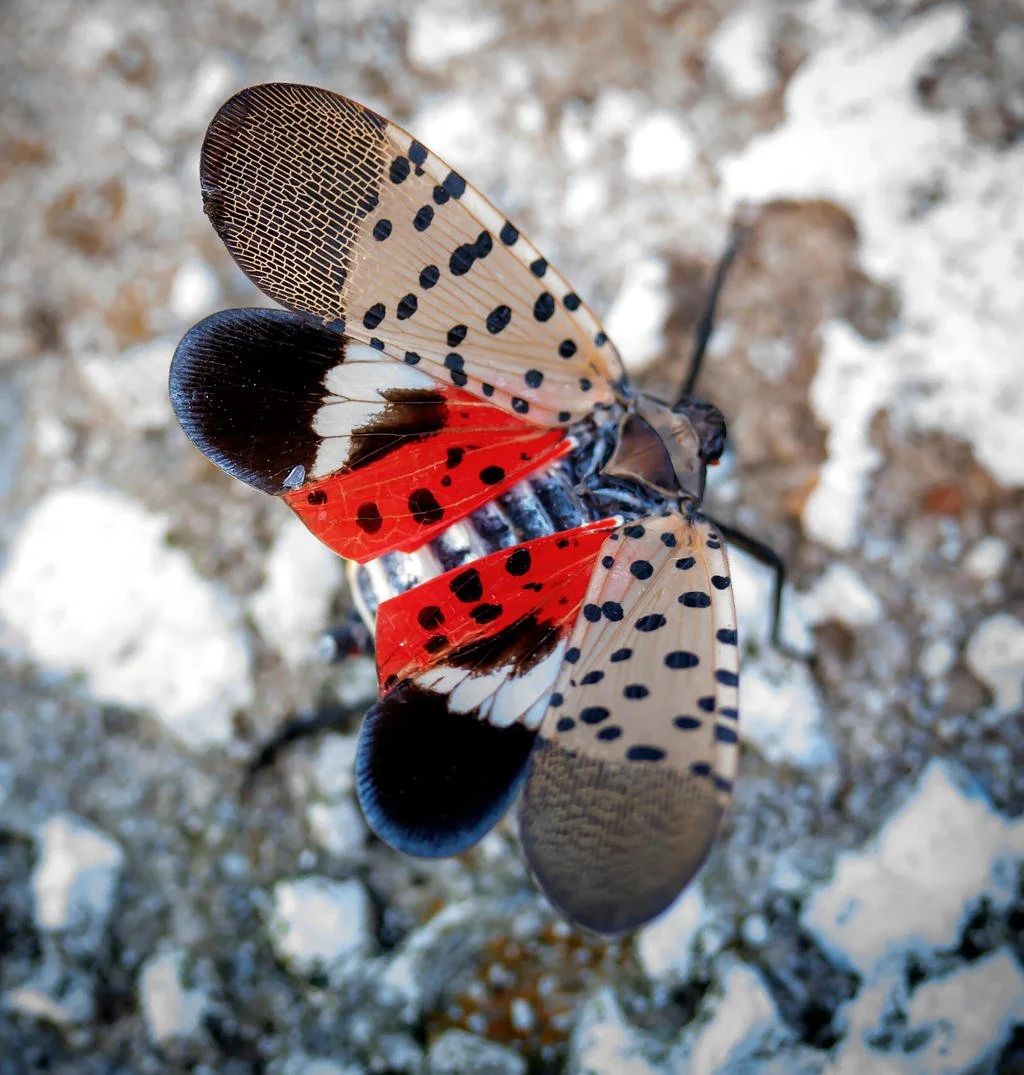
Fend them off and/or use them
Black Swallow-Wort flowers
Photo by jacilluch
Adapted from Robert Whitcomb’s “Digital Diary,’’ in GoLocal24.com
Invasive plants keep moving into southern New England from the southwest, aided by global warming. They crowd out some native plant species and harm certain native animal species, too. Some are poisonous.
Spotted Lanternfly
— Photo by WanderingMogwai
Invasive creatures are also moving in as New England’s climate becomes more like that of the Middle Atlantic states – e.g., those creepy but pretty Spotted Lanternflies, a menace to crops and trees.
In this hot and humid summer, the aggressive plants are growing particularly fast! Among them: Barberry, Black Swallow-Wort, Glossy Buckthorn and Oriental Bittersweet. They’ll keep coming. And wait till Kudzu, that invasive vine from Dixie, really gets going around here, strangling everything in sight.
But we can slow down these plants’ population explosion by pulling them out as soon as we see them and by using plant diseases and/or insect predators from their home range. Then there are man-made chemical herbicides, which of course must be used very carefully. (My favorite plant killer is vinegar.)
But some of these infuriating, fast-growing plants have medicinal uses!
Green Crab
This reminds me again of Green Crabs, those little invasive creatures that came over here from southern Europe and have been spreading along the New England coast as climate change raises seawater temperatures. The crabs consume vast quantities of high-value shellfish and tear up the ecological treasures that are marshes and eelgrass beds.
But it turns out that they can be eaten and create excellent stock for soups and stews. And they’re good bait. And so some entrepreneurs have started businesses to catch them. Let’s hope that this helps stem the worst of their aggression.
A Rhode Island company, Dune Brothers, serves Green Crabs.
The key ecological role of bats in New England
A Big Brown Bat Big (species found in New England) in flight.
— Photo by Rhododendrites
From an article by Frank Carini in ecoRI News’s series Wild New England, except for picture above.
“Across North America dichlorodiphenyltrichloroethane (DDT) and other pesticides had a significant impact on bats from the 1940s through the ’60s. Since the ban of DDT, in 1972, bat populations had been slowly recovering, until a fungal disease appeared three-plus decades later.
“Bat populations crashed again, when white-nose syndrome was discovered in a New York cave in 2006. The fungus that causes the disease spread rapidly across much of the United States, and the number of bat species that hibernate in caves and mines plummeted….
{But bats seem to be overcoming their latest challenges.}
‘‘These mammals play a vital ecosystem role. The nine bat species found in southern New England are insectivores, meaning they eat insects such as mosquitoes and some moths humans would label pests. It’s been estimated that an individual bat can eat 600 insects an hour. Nearly 70% of bat species feed primarily on insects. Some eat fruit, rodents, frogs, and fish….’’



